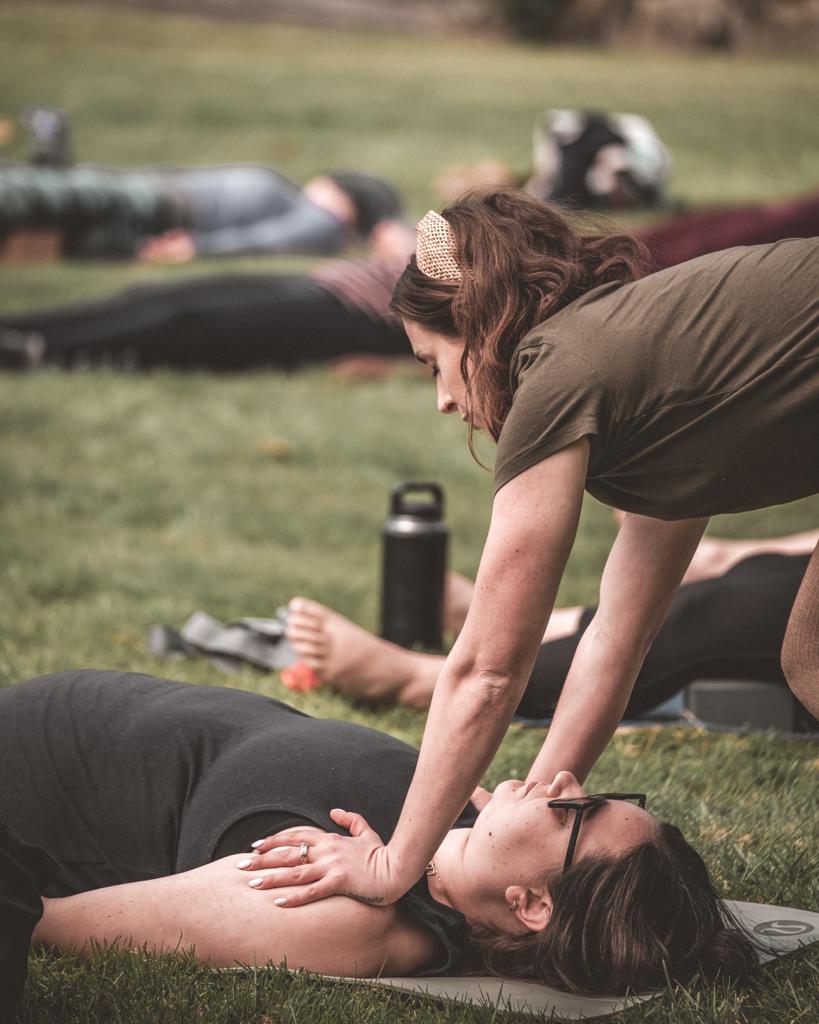What is meant by grounding and how can we do it?
In the whirlwind of our modern lives, it’s all too easy to lose ourselves in the chaos and distractions that surround us. However, there exists a practice that can anchor us amidst the storm, helping us rediscover our inner peace and authenticity. It’s called grounding. In this blog, we’ll delve into the meaning of grounding, its profound benefits and explore practical ways to incorporate it into your daily routines.
Understanding Grounding
Grounding is a powerful practice that allows you to reconnect with your unwavering essence in the present moment. It’s about firmly planting your two feet on your internal and external ground. It’s about finding stability amidst turbulence, like a steady rock amidst crashing waves. By grounding ourselves, we cultivate a sense of rootedness, clarity, and calm, enabling us to set and protect our boundaries, make aligned decisions and navigate life’s challenges with grace and authenticity.
The Profound Benefits of Grounding:
1. Restoring Inner Peace:
Grounding serves as a soothing balm for our minds and hearts. It brings us back to the present, away from the regrets of the past and anxieties about the future. By immersing ourselves in the present moment, we experience a profound sense of peace and tranquillity, freeing ourselves from the constant mental chatter that often plagues us.
2. Reconnecting with Authenticity:
In our fast-paced world, it’s so easy to lose touch with our true selves. Then when something difficult arises, we are taken off-guard and unable to steady ourselves when we need to. Grounding invites us to rediscover our core essence, values, and desires. By connecting with our authentic selves, we align our actions, decisions, and relationships with our deepest values, fostering a genuine sense of fulfilment and purpose.
3. Enhancing Emotional Well-being:
Grounding practices help us regulate our emotions and reduce stress. By grounding ourselves in the present, we cultivate mindfulness, allowing us to observe our emotions without being overwhelmed by them. This self-awareness empowers us to respond to emotional triggers with compassion and clarity, leading to greater emotional resilience and well-being.
Ways to Practice Grounding:

1. Mindfulness and Meditation:
Set aside dedicated time for mindfulness and meditation practices. Find a quiet space, and spend time visualising and sensing the connection and contact points of your body with the floor, chair, bed or earth underneath you. Feel its support, and notice how gravity gently tugs you down, keeping you earthbound. Focus on your breath, and gently bring your attention to the present moment. Allow your thoughts to come and go without judgment, and embrace the stillness and clarity that arises from this practice.
To experience mindfulness in meditation try this Grounding Meditation Practice
2. Breath:
Apana is the downward, outward movement and motion of energy or prana. Focussing on a long, smooth, slow inhale, moving in from the earth to your feet and legs into your body and back out into the earth. If you are sitting, do the same thing but through the tailbone in and out of your spine, or if you are lying down, in and out through your belly button.
To experience the benefits of ground through breath try this Guided Breathing Class
3. Nature Immersion:

Spend time in nature to reconnect with the grounding energy of the Earth. I highly recommend barefoot walks or even just sitting by a peaceful lake. Observe the beauty, innocence, resilience, steadiness and flow of the natural world, recognising how this external world also represents our internal one, allowing this to ground your energy.
4. Journaling and Reflection:
Engage in introspective practices like journaling or self-reflection. Set aside time daily to write down your thoughts, feelings, and experiences. Make sure it’s raw and real, don’t curate it, and don’t omit parts or dilute things. This process helps you gain clarity and provides an opportunity for self-expression and self-discovery.
5. Sensory Awareness:
Engage your senses to anchor yourself in the present moment. Slow down and pay attention to the sights, sounds, smells, tastes, and textures around you. Fully immerse yourself in the sensory experience, whether it’s savouring a meal, feeling the sun’s warmth on your skin, or listening to the rustle of leaves in the wind.
6. Engaging in Mindful Activities:
Infuse mindfulness into everyday activities such as cooking, cleaning, or gardening, dancing, playing an instrument or practising yoga. Approach these tasks with intention, fully engaging your senses and immersing yourself in the process. By doing so, you transform mundane activities into moments of grounding and presence.
Find balance and calmness in the present moment with this Slow Grounding Yoga Flow






